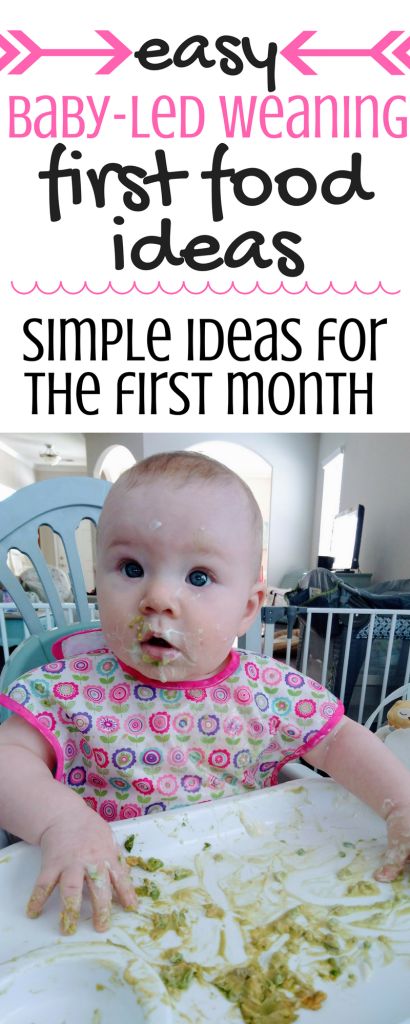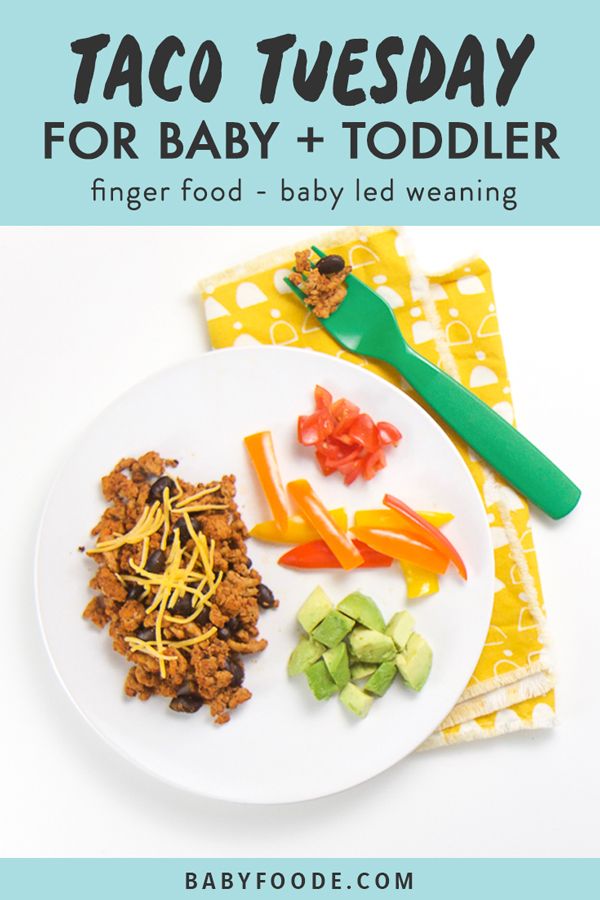Good food for 4 month baby
Top 10 Ideas For 4 Month Baby Food
Some fruits and boiled vegetables may be given to your baby to fulfill their needs.
Finding suitable food ideas for your four months old baby may be confusing as this is probably the first time they are being introduced to solid food.
As babies turn four months, they become more active and playful. In addition, they start to exhibit more interest in their surroundings. Their stomachs also grow bigger and are ready for more food. Moreover, they seem less interested in milk and are ready to explore new food varieties.
If you recognize these signs in your baby, it is an indication that they have reached the developmental milestone where you may introduce them to solid foods.
Read the post to find whether your baby is ready for solids and to discover some interesting food ideas for them.
Is Your Baby Ready For Solids?
Your baby must have lost the ‘tongue thrust reflex’ by the time they are four months of age. Thrust reflex prevents the infants from choking. It also causes them to push the food out of their mouths. The World Health Organization recommends that we start solids at six months but solids may be introduced at four months. If your baby seems unsatisfied after milk feeds, can hold their head up without any support, can sit without support, wakes up more frequently at night to feed, follows your food with their eyes when you eat, then probably it is the time to introduce him to solid foods. See if your baby is interested in the food or not. If your child stares and grabs your food at dinnertime, then he is ready for some variety. The baby should be able to sit well without any support. Your child needs good neck control to eat solid foods. It will enable him to swallow his food efficiently. The 4 months baby food should consist of solids.
According to Marissa Beck, MS, registered dietitian nutritionist and the founder of REVV Health, “Optimal timing is about signs of readiness over chronological age. The signs to look for are that your baby can sit with minimal support (not slouching) so that safe chewing and swallowing can occur.”
The signs to look for are that your baby can sit with minimal support (not slouching) so that safe chewing and swallowing can occur.”
Quick fact
The ability to pick up things between the finger and the thumb is one of the signs of readiness to eat solids (3).
Related: How To Teach A Baby To Chew And Swallow Their Food?
Top 10 Ideas
Here are the top 10 ideas for a 4-month-old baby as they begin their journey into solid foods.
1. Baby Cereal:
Baby cereal is the most recommended first food for infants. Prepare the cereal with formula or breast milk. It will give the cereal a texture and taste that he is already familiar with. Cereal is also one of the least allergenic foods, making it suitable for babies of 4 months. Give gluten-free cereal, particularly if you have a family history of Celiac diseases or allergies. Wheat, barley, and rye cereal may be unsuitable for babies as they contain gluten. Rice and oatmeal are the least allergenic varieties of cereal.
2. Avocado:
Image: Shutterstock
If you want to serve a complete and delicious meal for your baby, then you can serve him avocado. Slice an avocado and spoon out the flesh. Mash it with a fork or puree in a food processor. Add breast milk or formula milk to make it more ‘soupy’.
Related: 11 Tasty And Easy-To-Make Avocado Baby Food Recipes
3. Banana:
Bananas are considered one of nature’s most perfect foods. Babies love them for their natural sweetness. Also, banana is rich in fiber, so it will keep the things moving through your tot’s digestive system. Remove the skin of the banana and puree the flesh. You can also thin it with a little formula milk or breast milk. The food for 4 months baby is tasty with this all round nutritious fruit.
4. Butternut Squash:
Image: Shutterstock
Butternut squash has a pleasing texture, making it ideal for a baby’s palate. Baked butternut squash will make a great food for your little one. All you need to do is pierce the butternut squash and bake for an hour at 375 degrees. Cut it lengthwise and then scoop out the fibers and seeds. Then spoon out the flesh and mash with a fork or masher.
All you need to do is pierce the butternut squash and bake for an hour at 375 degrees. Cut it lengthwise and then scoop out the fibers and seeds. Then spoon out the flesh and mash with a fork or masher.
Related: 9 Tasty Butternut Squash Baby Food Recipes
5. Sweet Potato:
Sweet potato is a popular first food for babies. It is easier to digest and does not cause constipation in children. Cut the sweet potato and simmer in a little water until tender. Transfer to a food processor and puree, adding a little water or breast milk.
Related: Carrot For Babies: 11 Nutritious And Easy-To-Make Recipes
6. Carrots:
Image: Shutterstock
Carrot is another great choice for baby food. Cut the carrots into sticks and bake for over 20 to 30 minutes at 375 degrees Fahrenheit. The food for 4 month old baby is healthy with carrots.
7. Apple:
With your doctor’s consent, you can serve cooked apples to your baby. Dice the apple and simmer or steam until tender. Cooking apple until it is just tender will ensure that all the nutrients are preserved. Transfer to a blender or food processor and blend until smooth. The 4 month old baby food is extremely nutritious with this addition.
Cooking apple until it is just tender will ensure that all the nutrients are preserved. Transfer to a blender or food processor and blend until smooth. The 4 month old baby food is extremely nutritious with this addition.
Related: Cow Milk For Babies: Right Age, Benefits And Side Effects
8. Pear:
Image: Shutterstock
Pears are one of the safest foods to give as a first food. The allergic reactions to pear are rare. Also, they have a low acidity level, which makes them gentle on the tiny tummies. Puree steamed pear and add to the baby’s cereal.
9. Milk:
At this stage, breast milk will provide total nutrition to your baby. Don’t even think of replacing breast milk or formula until 12 months of age. It can cause serious health implications. Also, never give your child low-fat or skim milk products until he is 2 years old. The 4 months old baby food is extremely delicious with milk.
Quick fact
A child should drink only full-fat milk until two years old, as fat is essential for optimum brain development (4).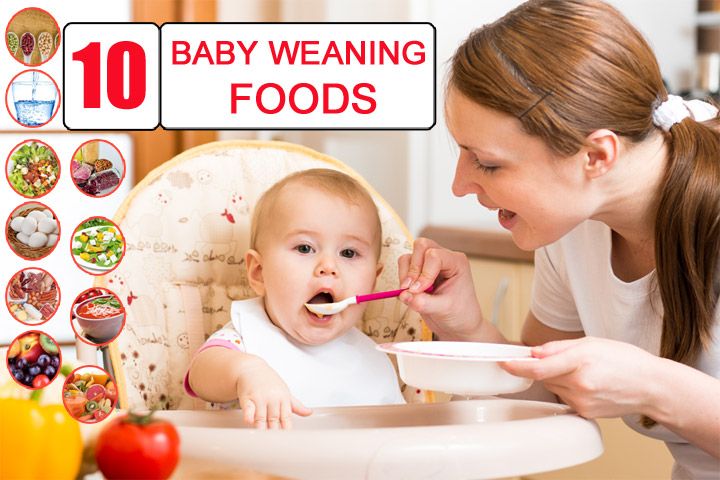
10. Peas:
Image: Shutterstock
Fiber filled peas will make an ideal first veggie for babies. Steam the peas for 6 minutes and puree in a food processor, adding the cooking liquid. Strain using a sieve to discard the solids. Pea puree may thicken after it is refrigerated. So stir in a small amount of water, formula or breast milk while heating.
Tips
- A baby’s tummy is the size of his fist. Do not expect your baby to finish a meal. He probably will eat just ½ of a tablespoon portion of what you serve to him.
- Serve a food to baby for four days at a stretch. It will help you learn the signs of intolerance and allergy. Follow this process until your baby has tried a variety of foods.
- Always serve cooked veggies to your baby so that he can chew it easily. Cooking breaks down the cell wall, making the food easier to digest by the baby.
- Place the spoon near your baby’s lips and let him taste and smell. Don’t be surprised if your tot rejects the first spoon.
 Wait for a few minutes and try again.
Wait for a few minutes and try again.
- Do not add any salt or pepper to the baby food.
- As your baby gets used to solid food, make the puree less runny. You can mash the food instead of pureeing it.
Point to consider
Babies under one year should not be fed much salt as their kidneys are not developed enough to excrete it. Also, breastfed babies get the necessary sodium from their mother’s milk (5).
1. What if a baby refuses their first solid food?
A baby might refuse solid food if they are full, unwell, or irritable. Hence, try feeding them when they are hungry. Check the consistency of the solid food and make it baby-compatible. Foods that are too hot or too cold might also be refused. Try a variety of foods initially to see the taste they prefer the most. If your baby still refuses to eat solid foods, consult a pediatrician.
2. Can I give my four-month-old orange juice?
Juices may seem easy to introduce babies to the taste of fruits.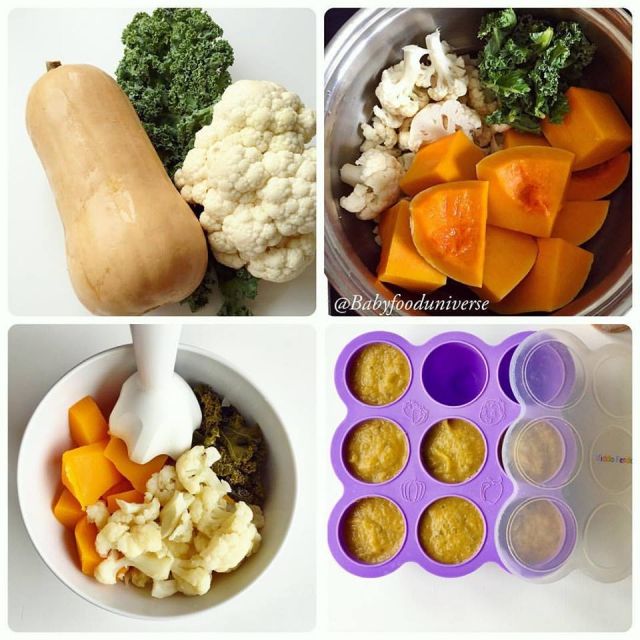 However, the American Academy of Pediatrics advises not to give babies juices until one year unless recommended by a pediatrician (1).
However, the American Academy of Pediatrics advises not to give babies juices until one year unless recommended by a pediatrician (1).
3. How do I keep baby foods safe?
Always feed your baby fresh, home-cooked food. Wash the ingredients properly in clean tap water. If you are preparing baby food in bulk, freeze the food immediately in a tightly sealed container. Label the container with the date of preparation and time. Only take out the required amount of food from the container when feeding a baby (2). Always check the quality of the food before feeding it to a baby.
4. Do doctors recommend solids at four months?
Blanca Garcia, RDN, nutrition specialist at MIDSS, suggests, “The Academy of Pediatrics (AAP) supports parents who want to breastfeed exclusively for about six months after birth. Therefore, not all doctors may recommend that infants start solids at four months. Some evaluate an infant and may determine that they may be ready at four months, but it’s not blanket advice for everyone. ”
”
If you are looking for food ideas for your 4-month-old baby, begin by offering easily digestible foods such as bananas, sweet potatoes, and cereals. At four months, your tiny tot may be interested in eating foods other than milk. Though most babies are fed various solid foods after six months, you may introduce mashed forms of foods after they cross the four-month mark. Nevertheless, do not rush into introducing foods to your baby. Also, remember that all babies do not react to new foods alike. Hence, if you notice that your baby is not interested in certain foods, give them some time or try feeding other varieties.
Key Pointers
- 4-month-old babies can consume the puree of avocado, banana, and carrots.
- To identify food intolerance issues while introducing solids, serve one food for three to four days instead of feeding mixed foods.
- Avoid adding spices or salt to baby food.
References:
MomJunction's articles are written after analyzing the research works of expert authors and institutions. Our references consist of resources established by authorities in their respective fields. You can learn more about the authenticity of the information we present in our editorial policy.
Our references consist of resources established by authorities in their respective fields. You can learn more about the authenticity of the information we present in our editorial policy.
- Weighing in on fruit juice: AAP now says no juice before 1.
https://publications.aap.org/aapnews/news/14804 - How to make homemade baby food?
https://www.eatright.org/food/planning-and-prep/snack-and-meal-ideas/how-to-make-homemade-baby-food# - Starting Solids
https://www.llli.org/breastfeeding-info/starting-solids/ - Cow’s milk and children
https://medlineplus.gov/ency/article/001973.htm - Salt: the facts
https://www.nhs.uk/live-well/eat-well/food-types/salt-nutrition/#:~:text=Babies%20should%20not%20eat%20much,including%20sodium%2C%20from%20breast%20milk
The following two tabs change content below.
- Reviewer
- Author
- Expert
How much should my baby eat? A guide to baby food portions
- Community
- Getting Pregnant
- Pregnancy
- Baby Names
- Baby
- Toddler
- Child
- Health
- Family
- Courses
- Registry Builder
- Baby Products
Advertisement
Wondering how much to feed your baby? This can be hard to figure out, especially when you're starting solids and most of your baby's food ends up on your little one or the floor.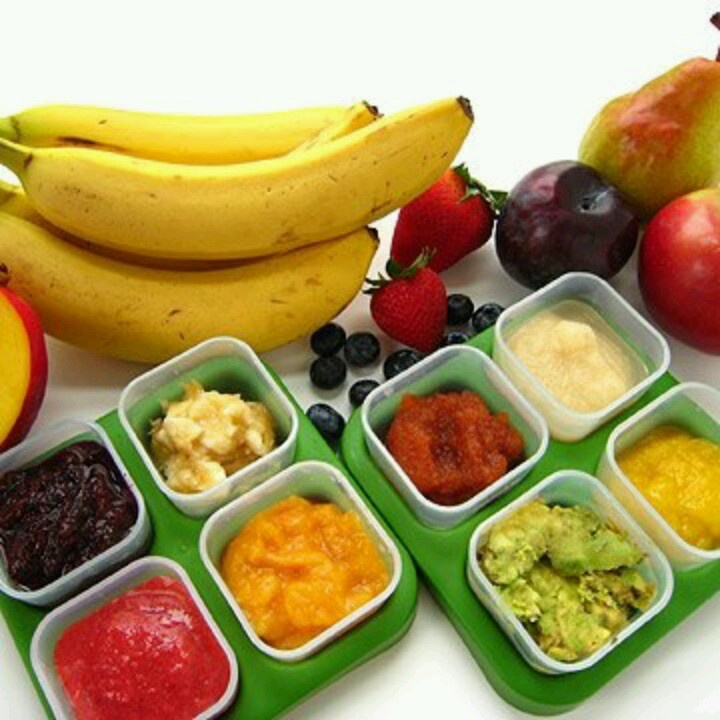 It's also difficult to determine how much an 8-month-old (or older baby) should eat – babies this age are more interested in solid foods but still get most of their nutrition from breast milk or formula. This visual guide to baby food portions can help you figure out how much your baby should eat at every stage.
It's also difficult to determine how much an 8-month-old (or older baby) should eat – babies this age are more interested in solid foods but still get most of their nutrition from breast milk or formula. This visual guide to baby food portions can help you figure out how much your baby should eat at every stage.
Photo credit: Karla Martin for BabyCenter
How much should my baby eat?
Do you worry that your baby is eating too little or too much? Your baby will self-regulate her food intake based on what their body needs, so let their appetite be your guide.
It's helpful to have a reference point, however. Here are photos of how much solid food a baby typically eats in a day. You can also ask your baby's doctor for feeding advice.
This visual guide shows:
- Portions for infants who are new to solids (typically 4 to 6 months)
- Two sample meals for a younger baby (6 to 8 months)
- Three sample meals and two snacks for an older baby (8 to 12 months) from a menu developed by the American Academy of Pediatrics (AAP)
Your little one may eat less or more than what's shown here. Your job is to provide a variety of healthy foods at regular intervals without pressure, and their job is to decide what and how much to eat.
Your job is to provide a variety of healthy foods at regular intervals without pressure, and their job is to decide what and how much to eat.
Photo credit: iStock.com / UntitledImages
Watch for signs your baby is full
Lots of factors – including activity level, growth spurts or plateaus, illness, and teething – will affect your baby's appetite, which can vary daily.
End feeding when they signal that they're done. Signs of being full include:
- Turning their head away
- Refusing to open their mouth for another bite after they've swallowed (resist the urge to encourage your baby to have one last spoonful)
- Leaning back in their chair
- Playing with the spoon or food rather than eating
Photo credit: Karla Martin for BabyCenter
How much a 4- to 6-month-old should eat
When your baby is developmentally ready for solids, typically around 4 to 6 months, talk to their doctor about introducing solid foods. The first bites are mostly about them getting used to the idea of having something different in their mouth.
The first bites are mostly about them getting used to the idea of having something different in their mouth.
- Start with a very small amount, 1 to 2 teaspoons, of a single-ingredient puree.
- Gradually increase to 1 to 2 tablespoons of food once a day.
- Follow your baby's fullness cues.
Popular first foods include pureed mango, banana, chicken, turkey, beef, peas, sweet potatoes, and infant cereal. It's up to you what food to start with, but wait 3 to 5 days between introducing each new food to make sure your baby doesn't have an allergic reaction or food intolerance. (And remember, no cow's milk or honey until age 1.)
Photo credit: Karla Martin for BabyCenter
How much a 6- to 8-month-old should eat
As your little one gets more comfortable with solids, you can increase the frequency of meals and variety of food.
- Transition from one to two meals a day, typically by 8 months.
- Over time, add a second food to each meal.
 The photo above is an example of a meal with two foods.
The photo above is an example of a meal with two foods. - Once you've worked up to two meals with two foods each, aim for a balance of proteins, vegetables, fruits, and grains in their daily diet.
- Whenever you introduce a new food, start with a very small amount, a teaspoon or two, to allow your baby to get used to its flavor and texture.
- Start with a soupy consistency. Gradually add more texture as their eating skills improve.
Expect their intake of breast milk or formula to go down. They'll start drinking less of it as they eat more solid foods. Provide healthy options at mealtimes, and let them choose how much to eat.
Note: The jars in all photos are standard 4-ounce baby food jars.
Photo credit: Karla Martin for BabyCenter
Breakfast for a younger baby (6 to 8 months)
Cereal and fruit make an easy combination for a morning meal.
Grain: Iron-fortified, whole-grain infant cereal is a popular first grain. At 6 months, a typical daily portion of infant cereal mixed with breast milk or formula might be 2 to 3 tablespoons, increasing to 4 to 8 tablespoons (1/4 to 1/2 cup) by 8 months. (It's best to avoid rice cereal, though.)
At 6 months, a typical daily portion of infant cereal mixed with breast milk or formula might be 2 to 3 tablespoons, increasing to 4 to 8 tablespoons (1/4 to 1/2 cup) by 8 months. (It's best to avoid rice cereal, though.)
Fruit: Babies love the natural sweetness of fruits like pears, apples, berries, prunes, and stone fruits. Between 6 and 8 months, a baby will typically transition from about 2 to 3 tablespoons of fruit puree a day to 4 to 8 tablespoons (1/4 to 1/2 cup) of mashed or minced fruit.
Photo credit: Karla Martin for BabyCenter
Dinner for a younger baby (6 to 8 months)
If you serve a grain and fruit in the morning, consider offering a protein-rich food and vegetable later in the day. Your child may eat more or less than the amounts shown.
Protein: A baby might transition from eating 1 to 2 tablespoons of meat puree at 6 months to 2 to 4 tablespoons at 8 months, for example. Other good protein sources include cheese, unsweetened plain whole-milk yogurt, tofu, beans, and lentils.
Vegetables: Between 6 and 8 months, a baby will typically transition from about 2 to 3 tablespoons of vegetable puree a day to 4 to 8 tablespoons (1/4 to 1/2 cup). Try classic favorites like carrots, spinach, or butternut squash, as well as less traditional first foods such as parsnips, beets, or asparagus.
As your child's eating skills improve, gradually add more texture by dicing or mincing foods.
Photo credit: Karla Martin for BabyCenter
How much an 8- to 12-month-old should eat
By 8 months or so, your baby is likely getting the hang of eating and needs to eat more calories to support their growing body. But since their little belly can't hold a lot of food, they'll need to eat more often. Every baby is different, but this may be a good time to try offering a third solid food meal.
During this period:
- Continue to give your baby breast milk or formula.
- Add morning and afternoon snacks. (Some babies this age are happy with breast milk or formula as their snack, while others gravitate toward solid foods.
 ) Once you've added a third meal and snacks, your baby will be eating or drinking something about every two to three hours.
) Once you've added a third meal and snacks, your baby will be eating or drinking something about every two to three hours.
- Continue to aim for a mix of proteins, vegetables, fruits, and grains.
- Introduce coarser and chunkier textures, for example, by dicing or mincing food instead of pureeing it, and graduate to soft finger foods as your baby's eating skills improve.
- Avoid foods with added sugars. Check the Nutrition Facts label on packaged foods, and try to steer clear of foods that list 1 gram or more of "Added Sugars."
- Provide healthy options, and let your baby choose how much to eat.
To visualize daily portions for an 8- to 12-month-old, check out the following photos of a typical day's menu for a baby this age, developed by the AAP.
Your child may eat more or less than these amounts. If you're concerned about how much your baby is eating, talk to their doctor for advice.
Photo credit: Karla Martin for BabyCenter
Breakfast for an older baby (8 to 12 months)
The AAP sample menu for a baby 8 to 12 months features a breakfast consisting of:
- 4 to 8 tablespoons (1/4 to 1/2 cup) whole-grain infant cereal mixed with formula or breast milk
- 4 to 8 tablespoons (1/4 to 1/2 cup) diced fruit
Note: This is an example. Your baby may eat different foods and amounts.
Your baby may eat different foods and amounts.
Photo credit: Karla Martin for BabyCenter
Morning snack for an older baby (8 to 12 months)
The AAP sample menu for a baby 8 to 12 months features a morning snack consisting of:
- 4 tablespoons (1/4 cup) diced cheese or cooked vegetables
Note: This is an example of a morning snack, which babies typically add sometime between 8 and 12 months. Your baby may eat different foods and amounts.
Photo credit: Karla Martin for BabyCenter
Lunch for an older baby (8 to 12 months)
The AAP sample menu for a baby 8 to 12 months features a lunch consisting of:
- 4 to 8 tablespoons (1/4 to 1/2 cup) unsweetened plain whole-milk yogurt or cottage cheese, or minced meat
- 4 to 8 tablespoons (1/4 to 1/2 cup) diced or mashed yellow or orange vegetable
Note: This is an example. Your baby may eat different foods and amounts.
Photo credit: Karla Martin for BabyCenter
Afternoon snack for an older baby (8 to 12 months)
The AAP sample menu for a baby 8 to 12 months features an afternoon snack consisting of:
- 4 tablespoons (1/4 cup) diced fruit or unsweetened plain whole-milk yogurt
- 1 whole-grain teething biscuit or cracker
Note: This is an example of an afternoon snack, which babies typically add sometime between 8 and 12 months. Your baby may eat different foods and amounts.
Your baby may eat different foods and amounts.
Photo credit: Karla Martin for BabyCenter
Dinner for older baby (8 to 12 months)
The AAP sample menu for a baby 8 to 12 months features a dinner consisting of:
- 4 tablespoons (1/4 cup) minced or ground poultry or meat, or diced tofu
- 4 to 8 tablespoons (1/4 to 1/2) cup diced, cooked green vegetable
- 4 tablespoons (1/4 cup) noodles, pasta, rice, or potato
- 4 tablespoons (1/4 cup) diced fruit
Note: This is an example. Your baby may eat different foods and amounts.
Photo credit: Karla Martin for BabyCenter
How much should my baby drink once they start eating solids?
Breast milk or formula will fully meet your child's hydration needs until they're about 6 months old. They may start drinking less as solid foods become a bigger part of their diet. Here are typical daily amounts by age – your baby's intake may be different, however.
6 to 8 months: 24 to 32 ounces of formula, or continued breastfeeding on demand
8 to 12 months: 24 ounces of formula, or continued breastfeeding on demand
Water: You can offer your baby water once they start eating solids, but let them self-regulate how much they drink. The Centers for Disease Control and Prevention (CDC) recommends giving babies who are 6 to 12 months old 4 to 6 ounces of water a day, but what your baby decides to drink may vary. They may drink more on a hot day, for example.
Avoid juice: Juice isn't recommended for babies younger than 12 months.
Photo credit: iStock.com / SDI Productions
Your baby has the final say
Keep in mind that these portions are an estimate. The truth is, every baby is different, and there's no set amount of food that's appropriate for every baby at every stage.
If you're worried about whether your baby is eating enough – or too much – the best advice is to look for and respond to signs that your baby is full.
Your baby's doctor will chart their weight gain at regular intervals. If the doctor sees a consistent growth curve and doesn't have other concerns, your baby is most likely eating the right amount of food.
Hungry for more?
Age-by-age guide to feeding your baby
The 10 best foods for babies
The worst foods for babies
Using spices and seasoning in baby food
Was this article helpful?
Yes
No
Elizabeth Dougherty
Elizabeth Dougherty is a veteran parenting writer and editor who's been contributing to BabyCenter since 2015. She's an intrepid traveler, devoted yogi, and longtime resident of Silicon Valley, where she lives with her husband and son.
Advertisement | page continues below
Advertisement
Complementary foods at 4 months | Useful tips from the Tyoma brand
It is well known that the ideal time to introduce complementary foods is between 4 and 6 months of age. The presence of a child's teeth or the ability to sit are not signs of a child's readiness for complementary foods. It is important that the baby does not have a reflex of pushing the spoon with his tongue, and he can swallow food thicker than breast milk or formula well.
It is important that the baby does not have a reflex of pushing the spoon with his tongue, and he can swallow food thicker than breast milk or formula well.
The pediatrician will help determine the exact start date for complementary foods, and in most cases this is the golden mean of 5-5.5 months. But there are situations when complementary foods need to be started from 4 months, including even a child who is exclusively breastfed.
In what cases are complementary foods introduced from 4 months?
- The child is not gaining weight well or is lagging behind in physical development.
- The child has functional digestive disorders (regurgitation, constipation).
- The mother has little breast milk or it is poorly absorbed.
- The child has a reduced appetite or is not digesting formula well.
- The child has signs of iron deficiency (anemia).

- The child has a pronounced food interest: he watches with interest the food of adults, reaches for food.
- The child stopped eating formula and began to demand food more often.
How to start complementary foods at 4 months?
The first product of complementary foods, regardless of the age and type of feeding of the baby (breast or artificial), should be energy-intensive foods: either porridge or vegetable puree. Porridge can be chosen first if the child has loose or unstable stools, and also if the child is underweight. After 4-5 days from the beginning of the introduction of porridge, butter can be gradually added to it (up to 5 g per serving of porridge in 150 g)
Mashed vegetables can be the first meal of the day if a child is prone to constipation, when it is better to choose zucchini, which can have a mild laxative effect on the child's stool. Starting from the 4-5th day of the introduction of vegetable puree, vegetable oil can be gradually added to it (up to 5 g per serving of vegetables in 150 g).
What foods can be introduced into the diet of a child at 4 months?
Kashi
Of the first cereals, it is better to give preference to buckwheat or rice. They must be dairy-free and can be diluted with water or breast milk, or the mixture that the baby eats. Later, you can introduce corn and oatmeal.
Vegetables
The first vegetable puree can be zucchini, broccoli, or cauliflower.
Fruits
The third type of complementary food can be fruit puree from apples or pears. Later, you can introduce mashed banana or apricot. At first, fruit puree can not be given to the child separately, but it is better to mix it with cereal or vegetables so that the child does not begin to prefer the sweet taste of fruits. When the amount of fruit puree reaches 50 g or more, it can also be given separately, for example, after the child has eaten porridge or for an afternoon snack.
Juices
Juices should not be the first feeding, in addition, they can not be introduced into the baby's first year of life at all, given their sweet taste and low nutritional value.
Can you make your own first meal?
You can prepare the first complementary foods yourself, but it is safer to use hypoallergenic monocomponent cereals or commercially produced purees prepared to high quality standards for baby food. In addition, it is important to consider that industrially produced baby cereals are often fortified with vitamins and minerals, which makes them especially useful for the first feeding.
How to start the introduction of a new product?
Complementary foods are introduced before breastfeeding or formula. The introduction of a new product should be gradual. But how is it?
- On day 1, give your baby 1 tsp. complementary foods before breastfeeding or formula
- On day 2 - 3 tsp. (15 g)
- On day 3 - 6 tsp. (30 g)
- Day 4 - 50 g
- Day 5 - 70 g
- Day 7 - 100 g
- For 8-10 days - bring to 150 g.

Please note that if complementary foods are introduced from 4 months, then the introduction of 1 new product may take longer than the introduction of complementary foods from 5 or 6 months, namely up to 10 days or more, depending on the reaction of the baby.
Important!
If on the 8-10th day of the introduction of a new product, the baby still cannot eat 100-150 ml of porridge or puree at once, then this amount can be divided into 2 or even 3 doses, for example, give 50 ml of porridge in the morning, 50 ml in the afternoon and 50 ml in the evening. Why do this? So that the child gradually gets used not only to the new product, but also to its quantity. In the future, you need to try to gradually increase the one-time amount of the product to the age volume.
Questions and answers
Will the amount of breast milk decrease if we start introducing complementary foods from 4 months?
Of course, with the introduction of complementary foods, breast milk will be produced less, but only by the amount of complementary foods introduced. As long as you breastfeed your baby on demand and attach him to the breast every time after giving complementary foods, as well as maintaining nightly breastfeeds, you will maintain long-term successful breastfeeding.
As long as you breastfeed your baby on demand and attach him to the breast every time after giving complementary foods, as well as maintaining nightly breastfeeds, you will maintain long-term successful breastfeeding.
Dear parents, remember that the introduction of complementary foods is a creative process that requires an individual approach and attention to the needs of the child. The proposed complementary feeding schemes in terms of time and quantity of introduced products are advisory in nature and do not imply their forced introduction.
From 4 to 6 months
The correct age to start complementary foods
It is recommended to start introducing complementary foods into the baby's diet no earlier than 4 months, but no later than 6 months*. At this age, the baby is in the active phase of development and reacts with curiosity to everything new! Some babies at 4 to 5 months of age can no longer satisfy their appetite with breast milk alone and need complementary foods for healthy growth. Other children have enough breast milk, and they are ready for the introduction of complementary foods only after 6 months. The decision to start complementary foods should always be made according to your baby's development. Do you feel like your baby is not getting enough breast milk? Does your baby hold his head on his own, shows interest in new foods or a spoon? Then it's time to start complementary foods. If in doubt, consult your pediatrician.
Other children have enough breast milk, and they are ready for the introduction of complementary foods only after 6 months. The decision to start complementary foods should always be made according to your baby's development. Do you feel like your baby is not getting enough breast milk? Does your baby hold his head on his own, shows interest in new foods or a spoon? Then it's time to start complementary foods. If in doubt, consult your pediatrician.
If your baby spits out the first spoonfuls of puree, be patient. After all, he must first learn to swallow it. Start with a few scoops and give your child time to get used to the new form of feeding.
*Recommended by the Nutrition Committee of the European Society for Pediatric Gastroenterology, Hepatology and Nutrition (ESPGHAN)
Why is complementary food so important for a baby?
After 4-6 months of life, only mother's milk or milk formulas are not enough to supply the child's body with all the nutrients and necessary energy. In addition, the transition to solid food trains the muscles of the mouth. And finally, with the introduction of complementary foods, the child will get acquainted with the variety of taste directions, which is also important for his development.
In addition, the transition to solid food trains the muscles of the mouth. And finally, with the introduction of complementary foods, the child will get acquainted with the variety of taste directions, which is also important for his development.
When to start complementary foods?
Gradually replace one breastfeed with complementary foods. First for lunch, then for dinner and finally for lunch. The mouse eats breakfast with the usual dairy food.
Starting complementary foods with food is not difficult. The first spoons will be vegetable or fruit purees
- simple recipes with ingredients that are particularly digestible and ideal for first feeding
- in economical and convenient 80g jars
First step: Lunch
We recommend that you start complementary foods at lunchtime with vegetable puree (e.g. Zucchini. My First Puree, Cauliflower. My First Puree) or "Broccoli. My first puree"). Then, for satiety, feed your baby as always: breast or bottle.




